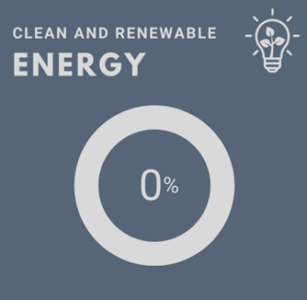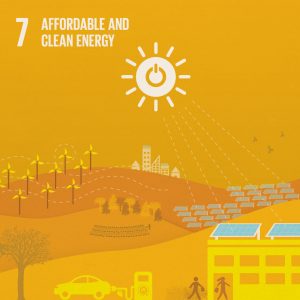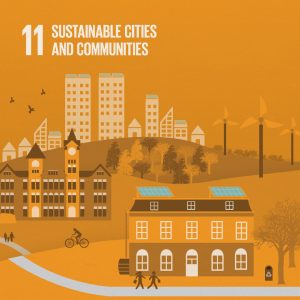By Hannah Schwartz
Universities play a pivotal role in shaping the future, not just through education but also by setting an example of responsible stewardship. Saving energy isn’t just about cutting costs; it’s about society, wellbeing, and environmental impact. By implementing energy-saving measures, universities demonstrate commitment to mitigating climate change by reducing carbon footprints. Energy efficiency initiatives can serve as valuable educational tools, inspiring students and faculty to adopt sustainable practices in their lives and careers. As hubs of innovation and knowledge, universities have the potential to lead the way in energy conservation, fostering a culture of environmental responsibility for generations to come.
With this in mind, STARS* asks universities to assess their energy conservation.
STARS aligns the criteria for energy conservation with the following United Nations Sustainable Development Goals (SDGs):
Goal 7 – Ensure access to affordable, reliable, sustainable and modern energy for all
Goal 13 – Take urgent action to combat climate change and its impact
Subcategories:
- Building Energy Efficiency: This credit aims to recognize institutions improving their buildings’ energy efficiency. The credit is split into two parts that are scored independently.
- The first part is site energy use per unit of floor area. Performance for Part 1 of this credit is assessed using energy use intensity (EUI), which tracks how much energy is used. It accounts for adjusted floor area, a figure that accounts for significant differences in EUI between types of building space like dorms, classrooms etc. An institution earns the maximum of 3 points available for Part 1 when its total annual energy consumption is 90 percent or more below the minimum performance threshold of 389 Btu per gross square meter per Celsius degree per day. Incremental points can be awarded.
- The second part is the reduction in source energy use per unit of floor area. This aims to measure whether the institution has reduced its total source energy consumption per gross square meter or foot of floor area compared to a baseline. An institution earns the maximum of 3 points available for Part 2 of this credit by reducing its total energy consumption per gross square meter/foot of floor area by 50 percent compared to a baseline. Partial points are awarded based on the reduction achieved.
- Auburn’s score: 3.40/6.00

- Clean and Renewable Energy: This credit recognizes institutions that support the development and use of energy from clean and renewable sources and applies to all institutions. It aims to measure if the institution supports the development and use of clean and renewable energy sources, using any one or combination of the following options: clean and renewable electricity, clean and renewable thermal energy, and unbundled renewable energy products. An institution earns the maximum of 4 points for this credit by obtaining energy from clean and renewable sources (Options 1-4) and/or by purchasing unbundled renewable energy products (Option 5) equivalent to 100 percent of total campus energy consumption. Incremental points can be awarded.
- Auburn’s score: 0/4.00

- Auburn’s score: 0/4.00
Reflection:
The Office of Sustainability conducts a variety of outreach efforts through its student intern program and its employee program. Typical yearly efforts tied to energy conservation include social media messaging, Earth Month activities, office strategy checklists, posters, and messages shared through tabling at events around campus. The office also features energy management information on its employee education material and on its website for both Living at AU and Working at AU. Auburn’s construction standards require all new buildings to achieve a minimum of LEED Silver. LEED certification provides a framework for healthy, highly efficient, and cost-saving green buildings, which offer environmental, social and governance benefits. In addition, all new buildings constructed on the main campus are connected to the campus building automation system. This provides preventative maintenance and related support services to ensure the buildings remain as efficient as possible.
As far as clean and renewable energy, Auburn University currently owns two small solar arrays. The first array is a 6.6kW system situated atop the parking deck near Jordan-Hare Stadium. The second array is a 9.6kW system on the transit stop in the Village Residence Hall area of campus.
Auburn can implement even more changes to become more energy efficient. Continuing to encourage LEED-certified buildings, as well as updating older buildings on campus, is one way. We could also promote more education and awareness of why it is important to conserve energy.
*The Sustainability Tracking, Assessment, and Rating System (STARS) program is a self-reporting framework for institutions of higher education to track their sustainability performance created by the Association for the Advancement of Sustainability in Higher Education. Overall, STARS is made up of 211 possible points in 64 different subcategories. The subcategories are grouped by Academics, Engagement, Operations, and Planning & Administration. Additionally, participants may receive extra points for exemplary and innovative practices. In this summary, our score is shown over the amount of possible points for each credit. View Auburn University’s 2022 STARS Report for more details.
Learn about the SDGs & AU and our contributions related to this post.





